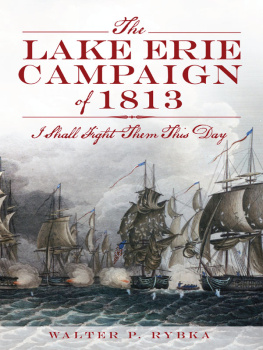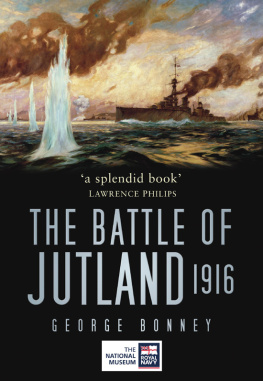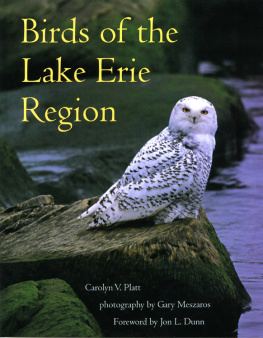A SIGNAL VICTORY

A
SIGNAL
VICTORY

The Lake Erie Campaign
18121813
DAVID CURTIS SKAGGS
GERARD T. ALTOFF

BLUEJACKET BOOKS
Naval Institute Press
Annapolis, Maryland
This book has been brought to publication by the generous assistance of Marguerite and Gerry Lenfest.
Naval Institute Press
291 Wood Road
Annapolis, MD 21402
1997 by David Curtis Skaggs and Gerard T. Altoff
All rights reserved. No part of this book may be reproduced or utilized in any form or by any means, electronic or mechanical, including photocopying and recording, or by any information storage and retrieval system, without permission in writing from the publisher.
First Bluejacket Books printing, 2000
ISBN 978-1-61251-226-6
The Library of Congress has cataloged the hardcover edition as follows: Skaggs, David Curtis.
A signal victory : the Lake Erie campaign, 1812-1813 / David Curtis Skaggs and Gerard T. Altoff.
p. cm.
Includes bibliographical references and index.
1. Erie, Lake, Battle of, 1813. 2. United StatesHistoryWar of 1812Campaigns. I. Altoff, Gerard T., 1949-. II. Title.
E356.E6S56 1997
973-5 23dc23 97-12236
To the memory of those who served on all sides in this struggle over the future of the Great Lakes
It has pleased the Almighty to give the arms of the United States a signal victory over their enemies on this lake.
Captain Oliver H. Perry to Secretary of the Navy William Jones,
September 10,1813
Wars usually last longer and cost more than governments expect; and they rarely achieve the political goals that might justify the risks, the cost and the pain.
Piers Mackesy, War without Victory:
The Downfall of Pitt, 17991802
Contents
The genesis of this volume dates back to 1988, when the two of us were members of a committee that organized a scholarly conference celebrating the 175th anniversary of the battle of Lake Erie. Professor Skaggs was the coeditor of the volume of essays resulting from that meeting, and Mr. Altoff contributed the descriptive narrative of the battle contained therein. In the following years, we continued our interest in the engagement and its ramifications and made a variety of contributions broadening the understanding of various aspects of that battle.
In 1994 we began the collaborative work presented here. Our objectives were threefold: first, to provide an updated study of a battle that had not received serious scholarly analysis since Admiral Alfred Thayer Mahan wrote his Sea Power in Its Relations to the War of 1812 nine decades earlier; second, to reassess the Lake Erie campaign in its strategic and tactical dimensions using a greater variety of sources and a less nationalistic viewpoint than previously presented; and third, to incorporate the experiences of individuals from all sides and various levels of society who contributed to the outcome. Our focus is on the Lake Erie campaign, not just the battle off Put-in-Bay, Ohio. Because of this, we incorporated much more background on strategic and operational decisions made both in London and Washington and by regional army and navy commanders on both sides than previous studies have. Finally, we wanted to convey, as much as the record allowed, the personalities that contributed to and were affected by the struggle to control the upper Great Lakes during the first year and a half of the War of 1812.
A study of this sort involves more than those whose names appear on the title page. Professor Skaggs was the fortunate recipient of institutional support from Bowling Green State University, which provided released time, allowed him to pursue research far from his principal place of employment, and funded a graduate assistant and a research consultant. In addition, he received released research time during a visiting professorship from the Air War College of Air University, Maxwell Air Force Base, Alabama.
At a risk of omitting the names of some benefactors, we wish to particularly thank research assistant Charles Morrisey, a native of New Brunswick who is a graduate student at Bowling Green; archivist Bob Garcia of Fort Malden National Historic Park in Amherstburg, Ontario; Douglas L. Hendry of Ottawa, who researched various archives in Canada and England for us; Christopher McKee of Grinnell College, whose encyclopedic knowledge of the early American navy proved very beneficial; Peter Rindlisbacher of Amherstburg, a masterful artist of the Great Lakes nautical tradition; Captain Walter B. Rybka, master of the brig Niagara, maintained by the Pennsylvania Historical and Museum Commission at Erie; and two superintendents of Perrys Victory and International Peace Memorial, Put-in-Bay, Harry C. Myers and Richard A. Lusardi. A particular debt of gratitude is owed Dr. Yu Zhou, assistant professor of geography at Bowling Green State University, who produced the maps and diagrams. Others whose support and interest were important to the final outcome were James C. Bradford, Dennis Carter-Edwards, Kevin P. Crisman, Frederick C. Drake, Timothy Dub, William S. Dudley, Robert Graham, Donald R. Graves, Harold D. Langley, Donald F. Melhorn, Jr., Patrick Wilder, and a host of staff members at such institutions as the William L. Clements Library, Ann Arbor, Michigan; the National Archives, Washington, D.C.; the Public Archives of Canada, Ottawa; the Institute for Great Lakes Research and the Jerome Library of Bowling Green State University; the Maryland Historical Society, Baltimore; the Naval War College Library and the Newport Historical Society, Newport, R.I.; and the John Hay Library and the Rhode Island Historical Society, Providence. The trustees of the Welch Regiment Museum (41st/69th Foot), Cardiff Castle, South Wales, graciously allowed us to use James Cochrane, The War in Canada, 18121814 (undated manuscript from the 1840s). An enormous debt is owed Paul Wilderson and the editorial staff of the Naval Institute Press, who have provided services and encouragement beyond the ordinary. Finally, we would like to thank our wives, Margo and Cyndee, for the patient faith they showed during this project, which dragged on far longer than they or we ever anticipated.
A SIGNAL VICTORY

A small but verdant isle appeard in view,
And Asteris the advancing pilot knew:
An ample port the rocks projected form,
To break the rolling waves and ruffling storm:
That safe recess they gain with happy speed,
And in close ambush wait the murderous deed.
The Odyssey
S OUTH BASS ISLANDS 1,382 acres make it the third largest of twenty-six limestone islands in western Lake Erie. Its protected cove, known as Putin- Bay, was described by an early commentator as being the BEST HARBOR between Buffalo and [Fort] Malden at the mouth of the Detroit River. Put-in-Bay was deep enough at certain points, to admit vessels of 400 tons burthen to anchor within twenty yards of the shore. Frequently used by sailing vessels as a refuge from lake storms and as a place to await favorable winds for entering the Detroit River, Put-in-Bay was one of the best-known locations on Lake Erie. At the islands center was the entrance to a cave containing an amphitheater-like limestone cavern, measuring 170 feet by 40 feet, and a deep pool of water. Inside were centuries-old relics from Indian visitations to this sacred site. The islands flora included three hundred acres of oak, black walnut, red cedar, and honey locust, and its fauna included not only an abundance of deer and rattlesnakes but also, during migratory seasons, an enormous variety of birds.










